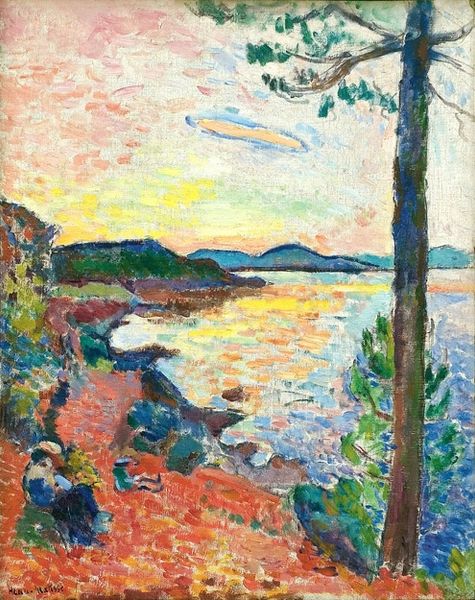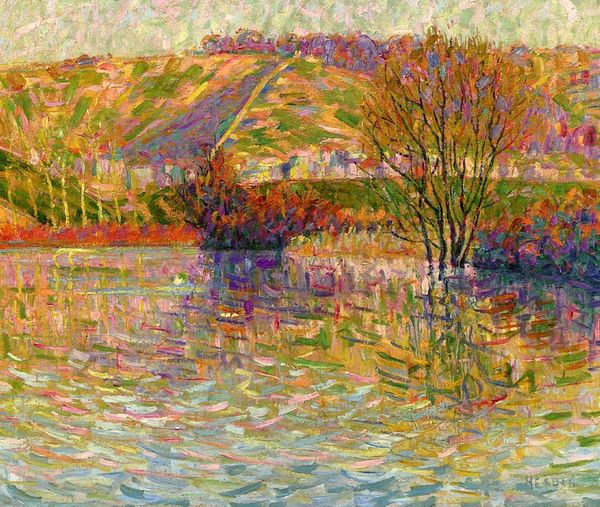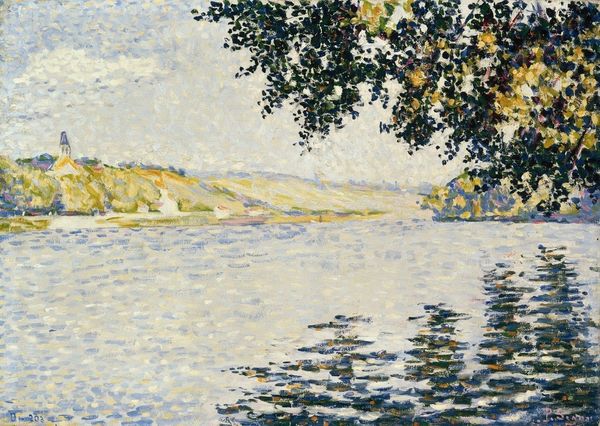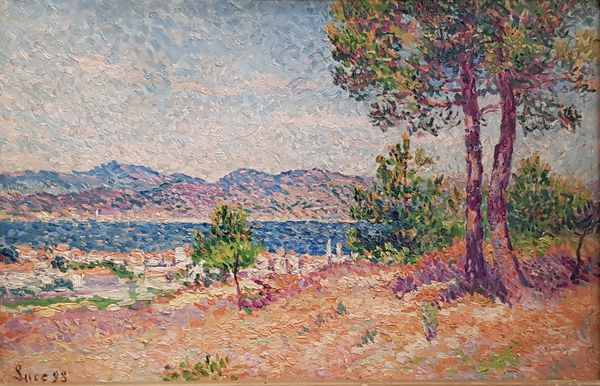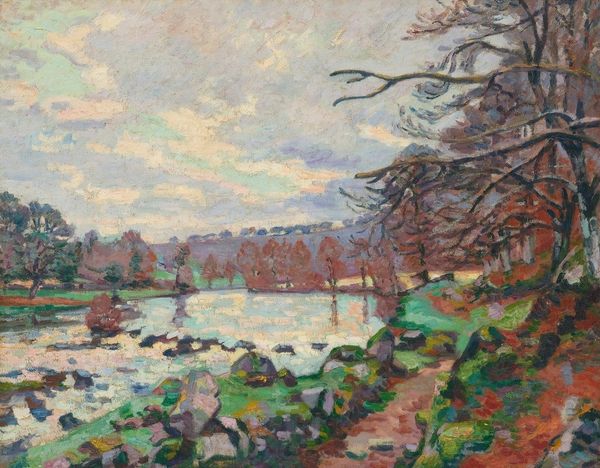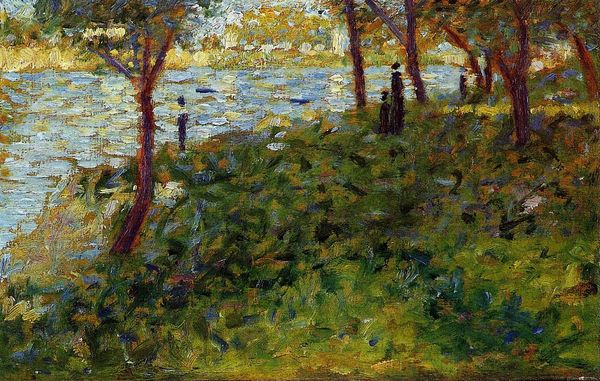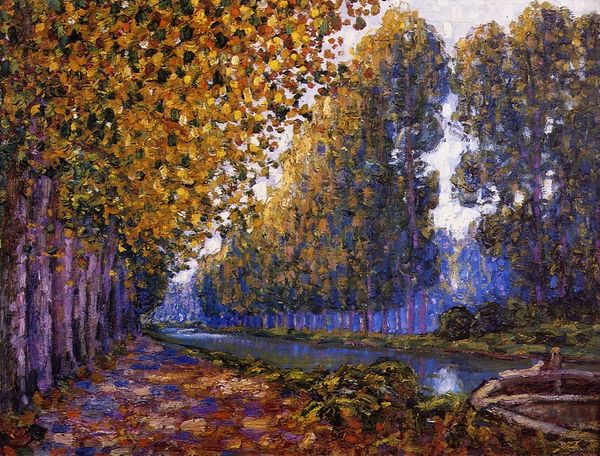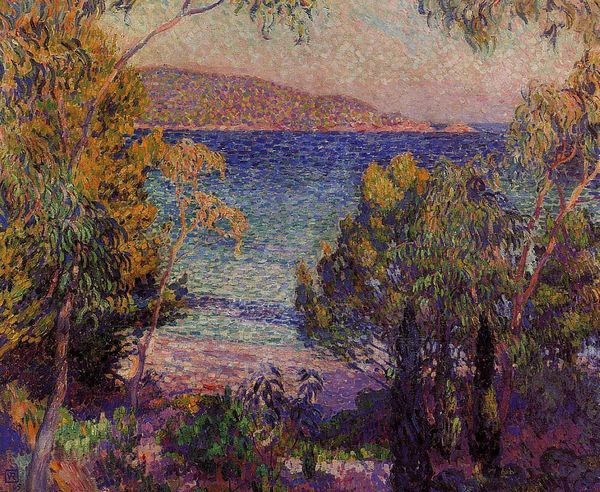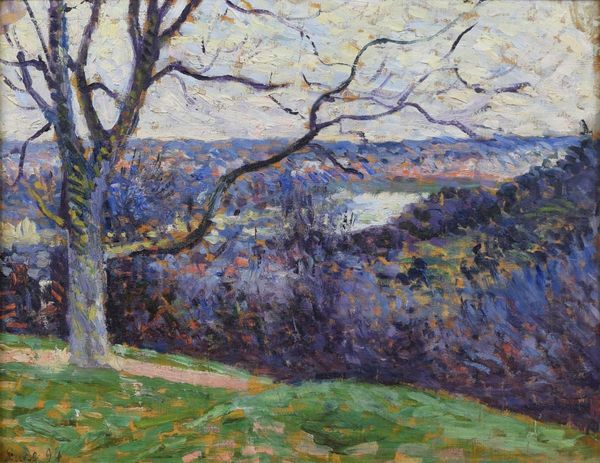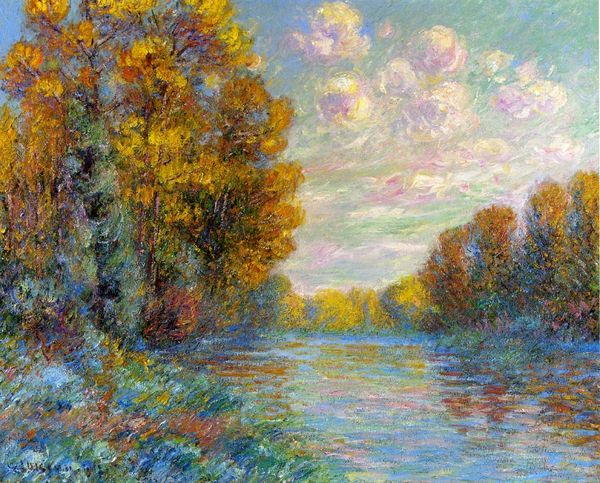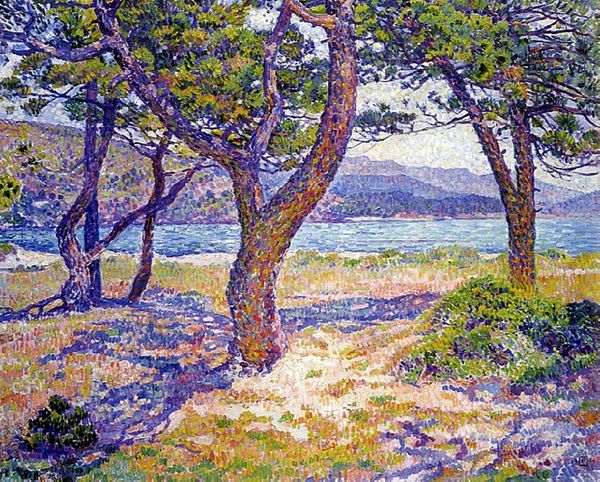
Dimensions: 65.2 x 92 cm
Copyright: Public domain US
Curator: Francis Picabia's "Sunlight on the Banks of the Loing," painted in 1908, captures a fleeting moment in time along this French river. Editor: Wow, just look at that sunlight flickering on the water! It's like a million tiny dancers doing their thing. Very dreamlike. Curator: It’s fascinating to view this landscape through a lens informed by feminist theory. While the Impressionists often sought to escape the socio-political milieu, their focus on domesticity and leisure indirectly reflected the evolving role of women during that period. These idyllic scenes might obscure the ongoing struggles for women's suffrage and social agency. Editor: Well, it’s not screaming revolution from the rooftops, that’s for sure! But there’s a certain…serenity here that feels almost rebellious. Like taking a moment for yourself when the world demands your attention. And look how Picabia layered all the hues, the touches of greens, reds, and blues to give depth to the shoreline... Almost like individual perspectives all creating a richer whole. Curator: That richness is indeed present and contributes to its appeal! You can appreciate, as well, how Impressionism, and landscapes in particular, shifted artistic focus away from historical and mythological subjects, towards representing the everyday and the local. "Sunlight on the Banks of the Loing" captures the movement's exploration of light and its impact on perception. It reflects the broader societal turn towards modernity. Editor: It’s also darn gorgeous! All that dappled light and the trees framing the water—makes you want to just dive right in and disappear for a while. Funny how art can do that, huh? A bit like sneaking off to a secret place. Curator: Precisely! Art’s ability to offer that momentary escape provides a critical perspective, allowing for reflection and, potentially, for re-engagement with the world armed with newfound insights. And viewed in relation to class, this kind of leisure was obviously unavailable for many members of the population. Editor: Mmm... It kind of balances things out. I mean, even with its quiet mood, knowing the full picture makes you appreciate the scene even more. I keep noticing these flecks of red among the trees, almost daring you to ignore them. Curator: Overall, seeing Picabia's "Sunlight on the Banks of the Loing" from our respective vantage points helps uncover its cultural and subjective importance. Editor: Yes, like light on water, ever changing. There's so much more here when we approach it together.
Comments
No comments
Be the first to comment and join the conversation on the ultimate creative platform.
